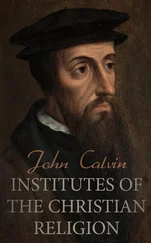The conclusion of the letter is in the handwriting of Francis Baudouin.
The signature of the letter is autograph.
"M. Calvin has represented that letters have been written to him, as well from Bourgoyne as from Lyons, to the effect that the children of Geneva were willing to give five hundred crowns to have him put to death; he does not know who these are." – Registers of the Consistory , 1st September 1547.
Charged with an important mission to the court of King Henry II., Perrin, on his return, was subjected to the accusation of treason in the carrying out of his commission. The King of France had said that he would give two millions to be master of Geneva. Perrin was accused of having replied, that two hundred horse would be sufficient to conquer the city. – Hist. de la Suisse , vol. xi. p. 361. It could not however be proved, that he had contracted secret engagements with France. He was nevertheless imprisoned, afterwards released at the request of the Seigneury of Berne, and stripped of his offices. – Registers of Council , September and November 1548.
Idelette de Bure is known to have espoused in her first nuptials an Anabaptist, Jean Storder. According to the doctrines of that sect, which denied the authority of the civil power, the marriage to be legitimate had no need of the sanction of the magistrate.
Allusion to the work which Calvin was at that time preparing against the Council of Trent, and which appeared at the end of the year. – See the Letter to Farel of the 28th December 1547.
See the letter to M. de Falais of the 16th August, p. 132.
Emmanuel Tremelli, a learned Hebraist of Ferrara, disciple of Peter Martyr, at that time in retirement at Strasbourg.
The book, – De la Vertu et Usage du Saint Ministère et des Sacremens , Genève, 1548. Senebier, Hist. Litt. , vol. i. p. 156, Art. Viret.
The minister Antoine Maigret, who was shortly afterwards deposed from his charge.
We read in the Life of Calvin by Theodore Beza, "From his youth he was all the better, and liberally brought up, – at the expense of his father, however – in the society of the children of the house of Montmor, whom he also accompanied as the companion of their studies at Paris." It is to one of the members of that noble family, Claude de Hangest, Abbot of Saint Eley, that Calvin dedicated, in 1532, his Commentary on Seneca's Treatise De Clementia .
Bullinger had submitted his book on the Sacraments to Calvin, ( Absoluta de Christi et ejus Ecclesiæ Sacramentis Tractatio ,) in which he departed slightly from the doctrine of Zwingle, with the view of approximating to that of the French Reformer. Still, however, the mystery of the spiritual presence of Christ, under external and material symbols, was not expressed in it with sufficient clearness. Calvin had fully criticised this book in a letter, or rather in an extended memoir, the original of which is preserved at Zurich, under the title, Censura Libri Bullingeri de Sacramentis , Geneva, 27th February 1547. This memoir, written with a brotherly freedom, concludes with these words: – "You thus have what in your book I desire to see corrected, that it may meet with absolute approval. I make no note of the parts that merit commendation. I have discharged the office of a friend, by complying with your wishes, and freely admonishing you; it now remains for you to take my liberty in good part. This I am confident you will do." – Library of Zurich. Coll. Hottinger , M. F. 80, p. 338.
Peter Farnese, son of Pope Paul III., had in truth been recently assassinated at Placentia, and that city had opened its gates to Charles V. But Parma remained under the power of the Pope, who in vain sued for justice from the Emperor on account of the murder of Farnese, and the dispossession of his children. – Robertson, History of Charles V. , B. ix.
The Catholic cantons having engaged to take no step that should have the effect of connecting them with the Emperor, the Reformed cantons, with Berne at their head, bound themselves to the strictest neutrality, and informed the German princes, that they could give them no aid without throwing the half of the confederate states into the hands of their enemy. – Hist. de la Suisse. Tom. xi. p. 291.
M. de Montmor. See note, p. 141.












